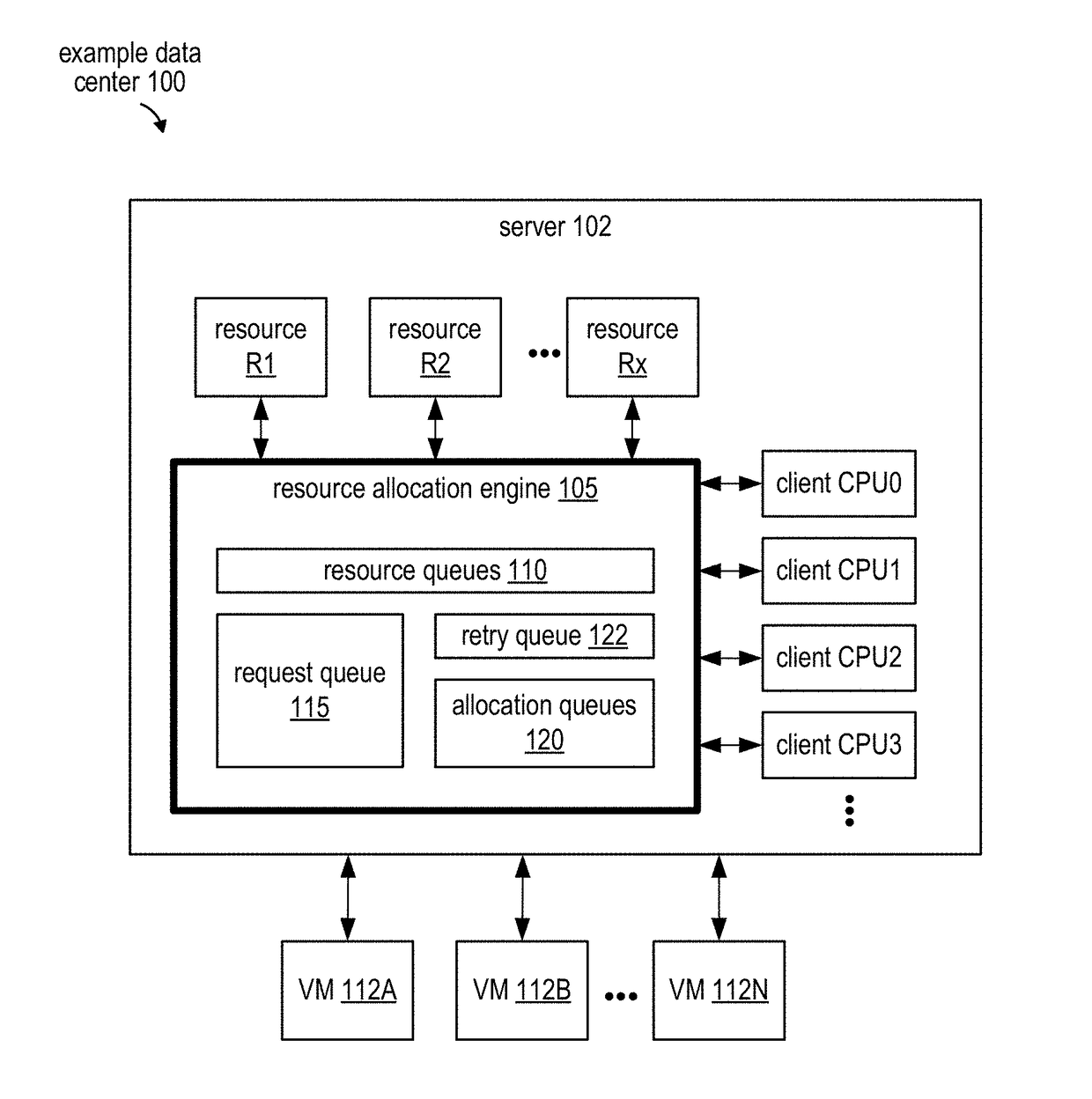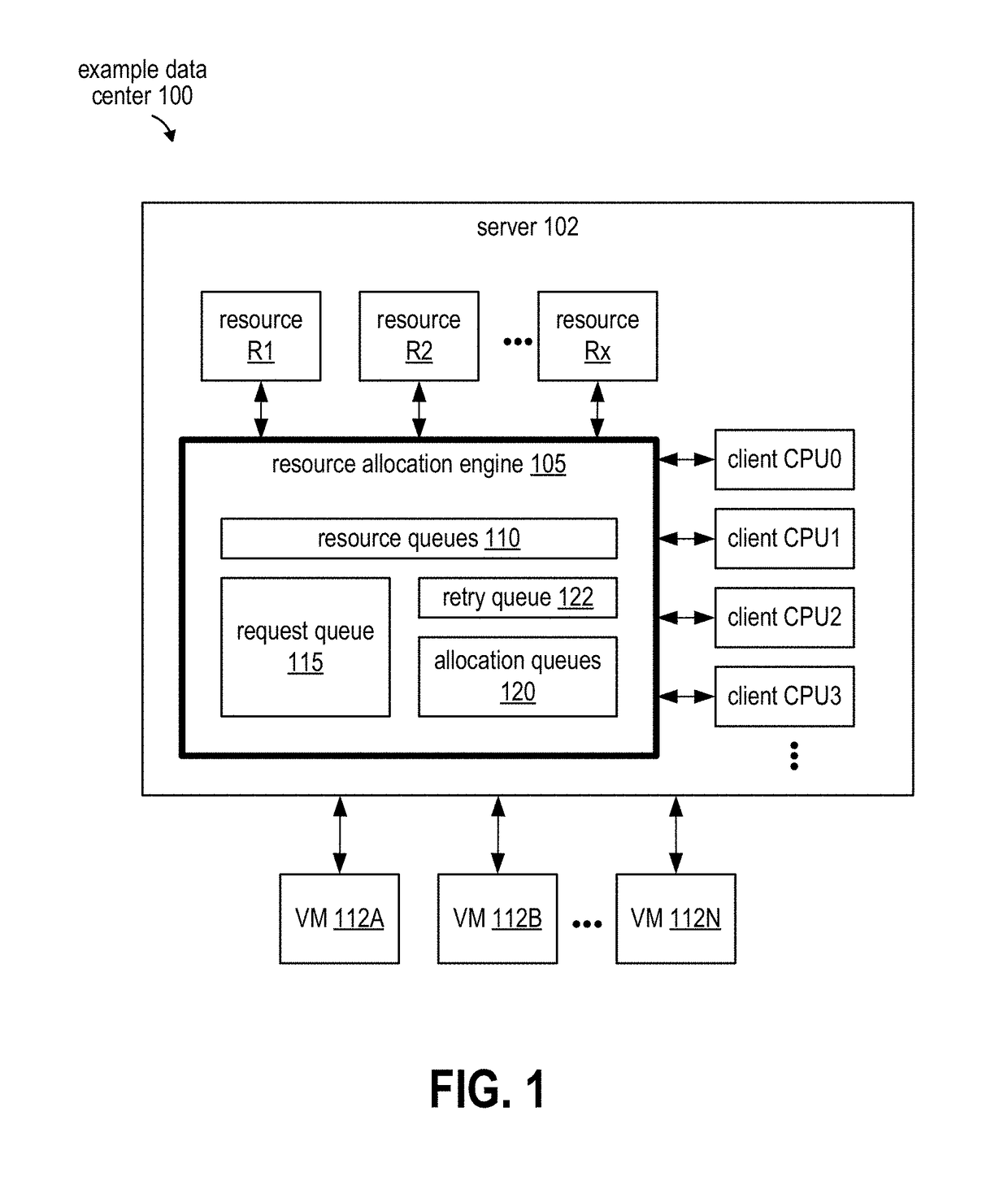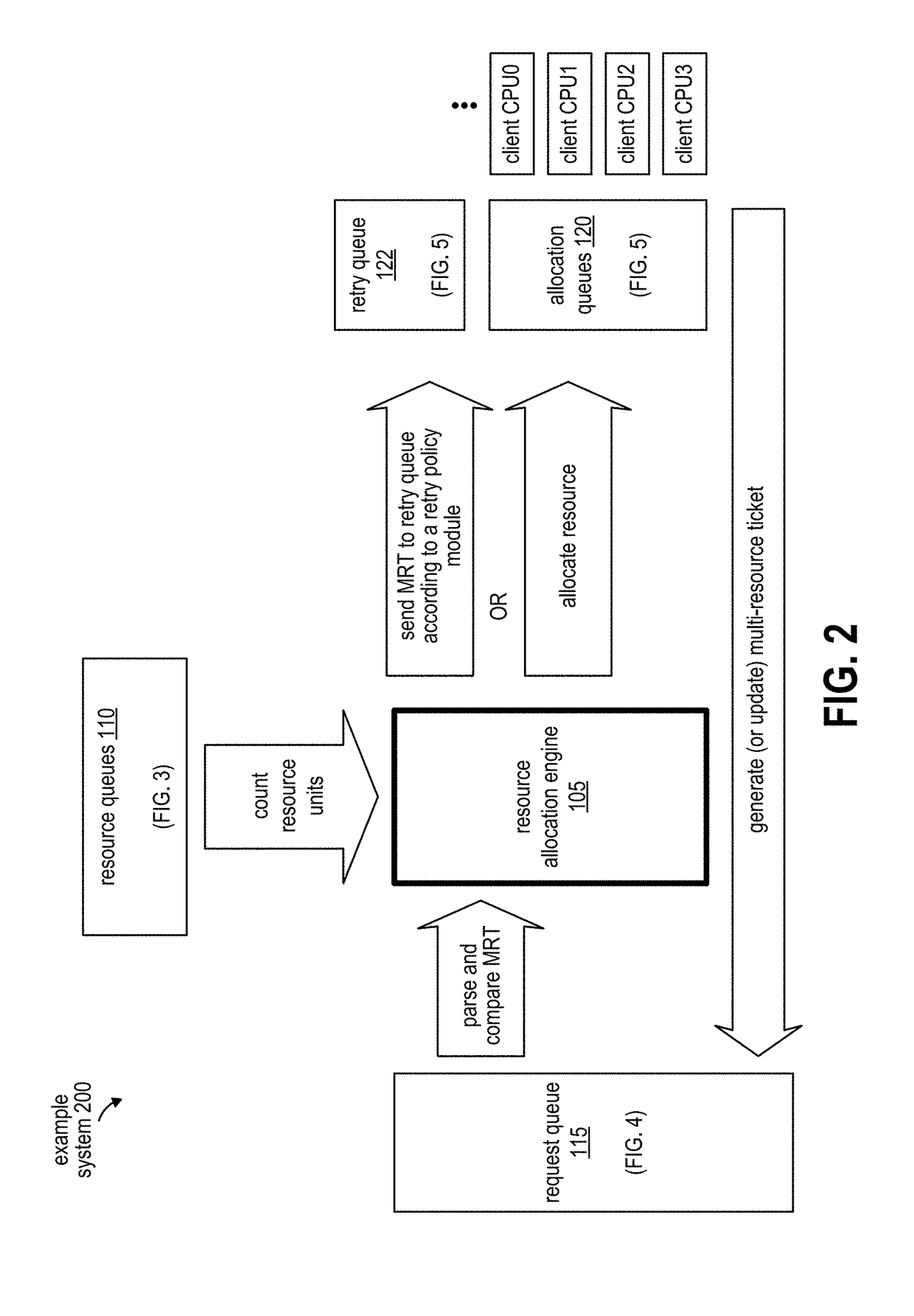Accelerated atomic resource allocation on a multiprocessor platform
a multi-processor platform and atomic resource technology, applied in multi-programming arrangements, program control, instruments, etc., can solve the problems of limited computer resources, difficult allocation of global common resources in a multi-cpu environment, and complicated embedded systems
- Summary
- Abstract
- Description
- Claims
- Application Information
AI Technical Summary
Benefits of technology
Problems solved by technology
Method used
Image
Examples
Embodiment Construction
[0026]In the following detailed description of the embodiments, numerous specific details are set forth. However, it will be obvious to one skilled in the art that the embodiments may be practiced without these specific details. In other instances well known procedures and components have not been described in detail so as not to unnecessarily obscure aspects of the embodiments.
General Overview
[0027]Systems, methods, and devices are described for accelerated atomic resource allocation on a multiprocessor platform. Embedded systems containing multiple processors often employ multiple resources simultaneously. As an example, for solid-state device (SSD) controllers, central processing units (CPUs) may need to share computer resources. Examples of shared computer resources include, without limitation, global external memory (e.g., double data rate synchronous dynamic random-access memory (DDR SDRAM)), on-chip synchronous random access memory (SRAM), hardware queues for signaling, a ser...
PUM
 Login to View More
Login to View More Abstract
Description
Claims
Application Information
 Login to View More
Login to View More - R&D
- Intellectual Property
- Life Sciences
- Materials
- Tech Scout
- Unparalleled Data Quality
- Higher Quality Content
- 60% Fewer Hallucinations
Browse by: Latest US Patents, China's latest patents, Technical Efficacy Thesaurus, Application Domain, Technology Topic, Popular Technical Reports.
© 2025 PatSnap. All rights reserved.Legal|Privacy policy|Modern Slavery Act Transparency Statement|Sitemap|About US| Contact US: help@patsnap.com



